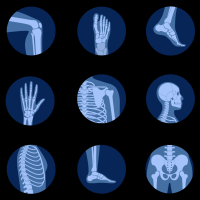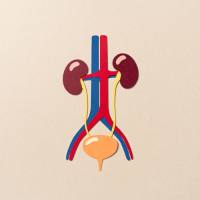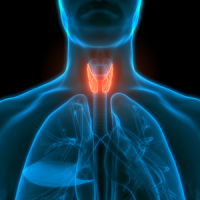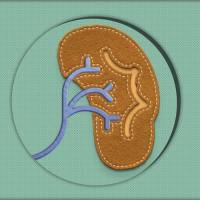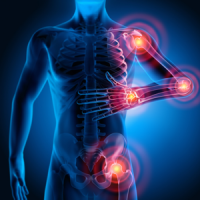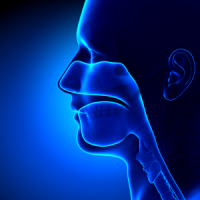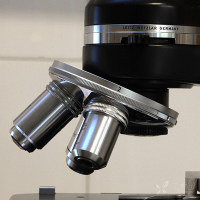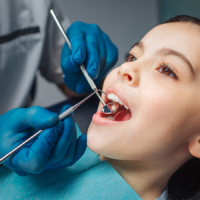坎贝尔骨科学(第九版)
55. Campbell's Operative Orthopaedics
55: Spinal Anatomy and Surgical Approaches
Marvin R. Leventhal
· ANATOMY OF VERTEBRAL COLUMN
· ANATOMY OF THORACIC AND LUMBAR PEDICLES
· CIRCULATION OF SPINAL CORD
· SURGICAL APPROACHES
· REFERENCES
Campbell's Operative Orthopaedics
55: Spinal Anatomy and Surgical Approaches
ANATOMY OF VERTEBRAL COLUMN
The vertebral column is composed of alternating bony vertebrae and fibrocartilaginous discs that are connected by strong ligaments and supported by musculature that extends from the skull to the pelvis and provides axial support to the body. There are 33 vertebrae (7 cervical, 12 thoracic, 5 lumbar, 5 sacral, and 4 coccygeal) (Figure 55-1). The sacral and coccygeal vertebrae form the sacrum and coccyx. A typical vertebra is composed of an anterior body and a posterior arch made up of two pedicles and two laminae that are united posteriorly to form the spinous process. To either side of the arch of the vertebral body is a transverse process and superior and inferior articular processes. The articular processes articulate with adjacent vertebrae to form synovial joints. The relative orientation of the articular processes accounts for the degree of flexion, extension, or rotation possible in each segment of the vertebral column. The spinous and transverse processes serve as levers for the numerous muscles attached to them. The vertebral bodies increase in size from cephalic to caudal, and this is believed to be the result of the increasing weights and stresses borne by successive segments. The intervertebral discs connecting the vertebral bodies absorb many of the stresses applied to the vertebral column. A disc consists of an outer concentric layer of fibrous tissue known as the anulus fibrosus and a central gelatinous portion, the nucleus pulposus. At birth the vertebral column is convex dorsally, which forms the predominant sagittal contour; however, when the erect position is acquired compensatory cervical and lumbar lordotic curves develop opposite the primary thoracic and sacral kyphotic curves. The length of the vertebral column averages 72 cm in adult males and 7 to 10 cm less in adult females. The vertebral canal extends throughout the length of the column and provides protection for the spinal cord, conus medullaris, and cauda equina. Nerves and vessels pass through the intervertebral foramina formed by the superior and inferior borders of the pedicles of adjacent vertebrae.
Click to enlarge Figure 55-1 Vertebral column: upper cervical vertebrae (occiput to C2), lower cervical vertebrae (C3-C7), thoracic vertebrae (T1-T12), lumbar vertebrae (L1-L5), sacrum, and coccyx.
Copyright © 1999 Mosby, Inc.
Campbell's Operative Orthopaedics
55: Spinal Anatomy and Surgical Approaches
ANATOMY OF THORACIC AND LUMBAR PEDICLES
Pedicle dimensions and angles change progressively from the upper thoracic spine distally. A thorough knowledge of these relationships is important when considering the use of the pedicle as a screw purchase site. Pedicle dimensions have been studied by Zindrick et al., Saillant, and others, and data obtained from these studies have added to the knowledge of pedicle morphological characteristics and provided information about the depth to which screws may be safely inserted at levels throughout the thoracolumbar spine. In 2905 pedicle measurements made from T1 to L5, pedicles were widest at L5 and narrowest at T5 in the horizontal plane (Figure 55-2). The widest pedicles in the sagittal plane were at T11, and the narrowest were at T1. Because of the oval shape of the pedicle, the sagittal plane width was generally larger than the horizontal plane width. The largest pedicle angle in the horizontal plane was at L5. In the sagittal plane, the pedicles angle caudad at L5 and cephalad at L3 through T1. The depth to the anterior cortex was significantly longer along the pedicle axis than along a line parallel to the midline of the vertebral body at all levels, with the exception of T12 and L1. The locations for screw insertion have been identified and described by Roy-Camille, Saillant, and Mazel and by Louis. The respective facet joint space and the middle of the transverse process are the most important reference points. An opening is made in the pedicle with a drill or hand-held curet, after which a self-tapping screw is passed through the pedicle into the vertebral body. The pedicles of the thoracic and lumbar vertebrae are tubelike bony structures that connect the anterior and posterior columns of the spine. Medial to the medial wall of the pedicle lies the dural sac. Inferior to the medial wall of the pedicle is the nerve root in the neural foramen. The lumbar roots usually are situated in the upper third of the foramen; therefore it is more dangerous to penetrate the pedicle medially or inferiorly as opposed to laterally or superiorly.
Click to enlarge Figure 55-2 Pedicle dimensions of T3 (A), T8 (B), and L4 (C) vertebrae. Vertical diameter (c) increases from 0.7 to 1.5 cm, horizontal diameter (d) increases from 0.7 to 1.6 cm with minimum of 0.5 cm in T5. Direction is almost sagittal from T4 to L4. Angle (e) seldom extends beyond 10 degrees. More proximally direction is more oblique: T1 = 36 degrees, T2 = 34 degrees, T3 = 23 degrees. L5 is oblique (30 degrees) but is large and easy to drill. (Redrawn from Roy-Camille R, Saillant G, Mazel C: Orthop Clin North Am 17:147, 1986.)
There are three techniques for localization of the pedicle that we use routinely: (1) the intersection technique, (2) the pars interarticularis technique, and (3) the mamillary process technique. It is important in preoperative planning to assess individual spinal anatomy with the use of high-quality anteroposterior and lateral roentgenograms of the lumbar and thoracic spine, as well as with axial computed tomography (CT) scanning at the level of the pedicle. The intersection technique is perhaps the most commonly used method of localizing the pedicle. It involves dropping a line from the lateral aspect of the facet joint, which intersects a line that bisects the transverse process at a spot overlying the pedicle (Figure 55-3 and Figure 55-4). The pars interarticularis is that area of bone where the pedicle connects to the lamina. Because the laminae and the pars interarticularis can be easily identified at surgery, they provide landmarks by which a pedicular drill starting point can be made. The mamillary process technique is based on a small prominence of bone at the base of the transverse process. This mamillary process can be used as a starting point for transpedicular drilling. Usually the mamillary process is more lateral than the intersection technique starting point, which is also more lateral than the pars interarticularis starting point. With this in mind, a different angle must be used when drilling from these sites. With the help of preoperative CT scanning at the level of the pedicle and intraoperative roentgenograms, the angle of the pedicle to the sagittal and horizontal planes may be determined.
Click to enlarge Figure 55-3 Pedicle entrance point in thoracic spine at intersection of lines drawn through middle of inferior articular facet and middle of insertion of transverse processes (1 mm below facet joint). A, Anteroposterior view. B, Lateral view. (Redrawn from Roy-Camille R, Saillant G, Mazel C: Orthop Clin North Am 17:147, 1986.)
Click to enlarge Figure 55-4 Pedicle entrance point in lumbar spine at intersection of two lines (see Figure 55-3). On typical bony crest it is 1 mm below articular joint. A, Anteroposterior view. B, Lateral view. (Redrawn from Roy-Camille R, Saillant G, Mazel Ch: Orthop Clin North Am 17:147, 1986.)
Copyright © 1999 Mosby, Inc.
Campbell's Operative Orthopaedics
55: Spinal Anatomy and Surgical Approaches
CIRCULATION OF SPINAL CORD
The arterial supply to the spinal cord has been determined from gross anatomical dissection, latex arterial injections, and intercostal arteriography. Dommisse has contributed most significantly to our knowledge of the blood supply, stating that the principles that govern the blood supply of the cord are constant, whereas the patterns vary with the individual. He emphasizes the following factors:
1. Dependence on three vessels: these are the anterior median longitudinal arterial trunk and a pair of posterolateral trunks near the posterior nerve rootlets.
2. Relative demands of gray matter and white matter: the longitudinal arterial trunks are largest in the cervical and lumbar regions near the ganglionic enlargements and are much smaller in the thoracic region. This is because the metabolic demands of the gray matter are greater than those of the white matter, which contains fewer capillary networks.
3. Medullary feeder (radicular) arteries of the cord: these reinforce the longitudinal arterial channels. There are from 2 to 17 anteriorly and from 6 to 25 posteriorly. The vertebral arteries supply 80% of the radicular arteries in the neck; those in the thoracic and lumbar areas arise from the aorta. The lateral sacral arteries, as well as the fifth lumbar, the iliolumbar, and the middle sacral arteries, are important in the sacral region.
4. Supplementary source of blood supply to the spinal cord: the vertebral and posteroinferior cerebellar arteries are important sources of arterial supply. Sacral medullary feeders arise from the lateral sacral arteries and accompany the distal roots of the cauda equina. The flow in these vessels seems reversible and the volume adjustable in response to the metabolic demands.
5. Segmental arteries of the spine: at every vertebral level a pair of segmental arteries supplies the extraspinal and intraspinal structures. The thoracic and lumbar segmental arteries arise from the aorta; the cervical segmental arteries arise from the vertebral arteries as well as the costocervical and thyrocervical trunks. In 60% of people an additional source arises from the ascending pharyngeal branch of the external carotid artery. The lateral sacral arteries and to a lesser extent the fifth lumbar, iliolumbar, and middle sacral arteries supply segmental vessels in the sacral region.
6. ‘‘Distribution point’’ of the segmental arteries: the segmental arteries divide into numerous branches at the intervertebral foramen, which has been termed the distribution point (Figure 55-5). A second anastomotic network lies within the spinal canal in the loose connective tissue of the extradural space. This occurs at all levels, with the greatest concentration in the cervical and lumbar regions. Undoubtedly the presence of the rich anastomotic channels offers alternative pathways for arterial flow, preserving spinal cord circulation after the ligation of segmental arteries.
7. Artery of Adamkiewicz: the artery of Adamkiewicz is the largest of the feeders of the lumbar cord; it is located on the left side, usually at the level of T9 to 11 (in 80% of people). It is clear that the anterior longitudinal arterial channel of the cord rather than any single medullary feeder is crucial. Equally clear is that the preservation of this large feeder does not ensure continued satisfactory circulation for the spinal cord. In principle it would seem of practical value to protect and preserve each contributing artery as far as is surgically possible.
8. Variability of patterns of supply of the spinal cord: the variability of blood supply is a striking feature, yet there is absolute conformity with a principle of a rich supply for the cervical and lumbar cord enlargements. The supply for the thoracic cord from approximately T4 to T9 is much poorer.
9. Direction of flow in the blood vessels of the spinal cord: the three longitudinal arterial channels of the spinal cord can be compared with the circle of Willis at the base of the brain, but it is more extensive and more complicated, although it functions with identical principles. These channels permit reversal of flow and alterations in the volume of blood flow in response to metabolic demands. This internal arterial circle of the cord is surrounded by at least two outer arterial circles, the first of which is situated in the extradural space and the second in the extravertebral tissue planes. It is by virtue of the latter that the spinal cord enjoys reserve sources of supply through a degree of anastomosis lacking in the inner circle. The ‘‘outlet points,’’ however, are limited to the perforating sulcal arteries and the pial arteries of the cord.
In summary, the blood supply to the spinal cord is rich, but the spinal canal is narrowest and the blood supply is poorest from T4 to T9. This should be considered the critical vascular zone of the spinal cord, a zone in which interference with the circulation is most likely to result in paraplegia.
Click to enlarge Figure 55-5 Vertebral blood supply. A, Posterior view; laminae re moved to show anastomosing spinal branches of segmental arteries. B, Cross-sectional view; anastomosing arterial supply of vertebral body, spinal canal, and posterior elements. (Redrawn from Bullough PG, Oheneba B-A: Atlas of spinal diseases, Philadelphia, 1988, JB Lippincott.)
The dominance of the anterior spinal artery system has been challenged by the fact that much anterior spinal surgery has been performed in recent years with no increase in the incidence of paralysis. This would seem to indicate that a rich anastomotic supply does exist and that it protects the spinal cord. The evidence suggests that the posterior spinal arteries may be as important as the anterior system but are as yet poorly understood. Venous drainage of the spinal cord is more difficult to clearly define than is the arterial supply (Figure 55-6). It is well-known that the venous system is highly variable. Dommisse points out that there are two sets of veins: those of the spinal cord and those that fall within the plexiform network of Batson. The veins of the spinal cord are a small component of the entire system and drain into the plexus of Batson. The Batson plexus is a large and complex venous channel extending from the base of the skull to the coccyx. It communicates directly with the superior and inferior vena cava system and the azygos system. The longitudinal venous trunks of the spinal cord are the anterior and posterior venous channels, which are the counterparts of the arterial trunks. The three components of the Batson plexus are the extradural vertebral venous plexus; the extravertebral venous plexus, which includes the segmental veins of the neck, the intercostal veins, the azygos communications in the thorax and pelvis, the lumbar veins, and the communications with the inferior vena caval system; and the veins of the bony structures of the spinal column. The venous system plays no specific role in the metabolism of the spinal cord; it communicates directly with the venous system draining the head, chest, and abdomen. This interconnection allows metastatic spread of neoplastic or infectious disease from the pelvis to the vertebral column.
Click to enlarge Figure 55-6 Venous drainage of vertebral bodies and formation of internal and external vertebral venous plexuses. (Redrawn from Bullough PG, Oheneba B-A: Atlas of spinal diseases, Philadelphia, 1988, JB Lippincott.)
During anterior spinal surgery, we empirically follow these principles: (1) ligate segmental spinal arteries only as necessary to gain exposure; (2) ligate segmental spinal arteries near the aorta rather than near the vertebral foramina; (3) ligate segmental spinal arteries on one side only when possible, leaving the circulation intact on the opposite side; and (4) limit dissection in the vertebral foramina to a single level when possible so that collateral circulation is disturbed as little as possible.
Copyright © 1999 Mosby, Inc.
Campbell's Operative Orthopaedics
55: Spinal Anatomy and Surgical Approaches
SURGICAL APPROACHES
ANTERIOR APPROACHES
With the posterior approach for correction of spinal deformities well established, in recent years more attention has been placed on the anterior approach to the spinal column. Many pioneers in the field of anterior spinal surgery recognized that anterior spinal cord decompression was necessary in spinal tuberculosis and that laminectomy not only failed to relieve anterior pressure but also removed important posterior stability and produced worsening of kyphosis. Advances in major surgical procedures, including anesthesia and intensive care, have made it possible to perform spinal surgery with acceptable safety.
Common use of the anterior approach for spinal surgery did not evolve until the 1950s. Leaders in the anterior approach to the cervical and lumbar areas have been Cloward; Southwick and Robinson; Bailey and Badgley; Bohlman et al.; and others. The transthoracic approach to the thoracic spine has developed more slowly. Nachlas and Borden, and Smith, von Lackum, and Wylie were among the first to report their experiences; however, the major proponents of this technique were Hodgson et al. of Hong Kong. Their reports of success with this method received worldwide acceptance.
In general, anterior approaches to the spine are indicated for decompression of the neural elements (spinal cord, conus medullaris, cauda equina, or nerve roots) when anterior neural compression has been documented by myelography, postmyelogram CT scanning, or magnetic resonance imaging (MRI). A number of pathological entities can cause significant compression of the neural elements, including traumatic, neoplastic, inflammatory, degenerative, and congenital lesions.
Anterior approaches to the spine generally are performed by an experienced spine surgeon and, as a rule, this type of surgery is not appropriate for those who only occasionally perform spinal techniques. In many centers, a team approach is preferred to use the skill of the orthopaedic surgeon, neurosurgeon, thoracic surgeon, or head and neck surgeon. The orthopaedic surgeon still must have a working knowledge of the underlying viscera, fluid balance, physiology, and other elements of intensive care. Complications of anterior spine surgery are rare; however, there is a high risk of significant morbidity, and these approaches should be used with care and only in appropriate circumstances. Potential dangers include iatrogenic injury to vascular, visceral, or neurological structures.
The exact incidence of serious complications from anterior spinal surgery is not known. A thorough understanding of anatomical tissue planes and meticulous surgical technique are necessary to prevent serious complications. The choice of approach depends on the preference and experience of the surgeon, the patient’s age and medical condition, the segment of the spine involved, the underlying pathological process, and the presence or absence of signs of neural compression. Commonly accepted indications for anterior approaches are listed in Box 55-1.
Box 55-1 Relative indications for anterior spinal approaches
A. Traumatic 1. Fractures with documented neurocompression secondary to bone or disc fragments anterior to dura2. Incomplete spinal cord injury (for cord recovery) with anterior extradural compression3. Complete spinal cord injury (for root recovery) with anterior extradural compression4. Late pain or paralysis after remote injuries with anterior extradural compression5. Herniated intervertebral discB. Infectious1. Open biopsy for diagnosis2. Debridement and anterior strut graftingC. Degenerative1. Cervical spondylitic radiculopathy2. Cervical spondylitic myelopathy3. Thoracic disc herniation4. Cervical, thoracic, and lumbar interbody fusionsD. Neoplastic1. Extradural metastatic disease2. Primary vertebral body tumorE. Deformity1. Kyphosis—congenital or acquired2. Scoliosis—congenital, acquired, or idiopathic
Anterior approach from occiput to C3. The anterior approach to the upper cervical spine (occiput to C3) may be either transoral or retropharyngeal, depending on the pathological process present and the experience of the surgeon.
Anterior transoral approach.
TECHNIQUE (Spetzler) (Figure 55-7)
Position the patient supine using a Mayfield head-holding device or with skeletal traction through Gardner-Wells tongs. Monitoring of the spinal cord through somatosensory evoked potentials is recommended. The surgeon may sit directly over the patient’s head. Pass a red rubber catheter down each nostril and suture it to the uvula. Apply traction to the catheters to pull the uvula and soft palate out of the operative field, taking care not to necrose the septal cartilage by excessive pressure. Insert a McGarver retractor into the open mouth and use it to retract and hold the endotracheal tube out of the way. The operating microscope is useful to improve the limited exposure. Prepare the oropharynx with pHisoHex and Betadine. Palpate the anterior ring of C1 beneath the posterior pharynx and make an incision in the wall of the posterior pharynx from the superior aspect of C1 to the top of C3. Obtain hemostasis with bipolar electrocautery, taking care not to overcauterize, thereby producing thermal necrosis of tissue and increased risk of infection.
Click to enlarge Figure 55-7 Anterior transoral approach (see text). (Redrawn from Spetzler RF: Transoral approach to the upper cervical spine. In Evarts CM, editor: Surgery of the musculoskeletal system, New York, 1983, Churchill Livingstone.)
With a periosteal elevator subperiosteally dissect the edges of the pharyngeal incision from the anterior ring of C1 and the anterior aspect of C2. Use traction stitches to maintain the flaps out of the way. Next, under direct vision, with either the operating microscope or with magnification loupes and headlights, perform a meticulous debridement of C1 and C2 with a high-speed air drill, rongeur, or curet. When approaching the posterior longitudinal ligament, a diamond burr is safer to use in removing the last remnant of bone. Once adequate debridement of infected bone and necrotic tissue has been accomplished, decompress the upper cervical spinal cord. If the cervical spine is to be fused anteriorly, harvest a corticocancellous graft from the patient’s iliac crest, fashion it to fit, and insert it. Irrigate the operative site with antibiotic solution and close the posterior pharynx in layers.
Aftertreatment. An endotracheal tube is left in place overnight to maintain an adequate airway. A halo vest can then be applied or skeletal traction may be maintained before mobilization.
Anterior retropharyngeal approach. This approach to the upper cervical spine, as described by McAfee et al., is excellent for anterior debridement of the upper cervical spine and allows placement of bone grafts for stabilization if necessary. Unlike the transoral approach, it is entirely extramucosal and is reported to have fewer complications of wound infection and neurological deficit.
TECHNIQUE (McAfee et al.)
Position the patient supine, preferably on a turning frame with skeletal traction through tongs or a halo ring. Somatosensory evoked potential monitoring of cord function is suggested during the procedure. Perform fiberoptic nasotracheal intubation to prevent excessive motion of the neck and to keep the oral pharynx free of tubes that could depress the mandible and interfere with subsequent exposure.
Make a right-sided transverse skin incision in the submandibular region with a vertical extension as long as required to provide adequate exposure (Figure 55-8, A). If the approach does not have to be extended below the level of the fifth cervical vertebra, there is no increased risk of damage to the recurrent laryngeal nerve.
Click to enlarge Figure 55-8 Anterior retropharyngeal approach (see text). (Redrawn from McAffee PC, Bohlman HH, Riley LH Jr, et al: J Bone Joint Surg 69-A:1371, 1987.)
Carry the dissection through the platysma muscle with the enveloping superficial fascia of the neck and mobilize flaps from this area. Identify the marginal mandibular branch of the seventh nerve with the help of a nerve stimulator and ligate the retromandibular veins superiorly. Keep the dissection deep to the retromandibular vein to prevent injury to the superficial branches of the facial nerve. Ligate the retromandibular vein as it joins the internal jugular vein. Next, mobilize the anterior border of the sternocleidomastoid muscle by longitudinally dividing the superficial layer of the deep cervical fascia. Feel for the pulsations of the carotid artery and take care to protect the contents of the carotid sheath. Resect the submandibular gland (Figure 55-8, B) and ligate the duct to prevent formation of a salivary fistula. Identify the digastric and stylohyoid muscles and tag and divide the tendon of the former. It is important to emphasize that the facial nerve can be injured by superior retraction on the stylohyoid muscle; however, by dividing the digastric and stylohyoid muscles, the hyoid bone and hypopharynx can be mobilized medially, preventing exposure of the esophagus, hypopharynx, and nasopharynx. Next, identify the hypoglossal nerve and retract it superiorly. Continue dissection to the retropharyngeal space between the carotid sheath laterally and the larynx and pharynx medially. Increase exposure by ligating branches of the carotid artery and internal jugular vein, which prevent retraction of the carotid sheath laterally (Figure 55-8, C and D). Identify and mobilize the superior laryngeal nerve. Following adequate retraction of the carotid sheath laterally, divide the alar and prevertebral fascial layers longitudinally to expose the longus colli muscles. Take care to maintain the head in a neutral position and accurately identify the midline. Remove the longus colli muscles subperiosteally from the anterior aspect of the arch of C1 and the body of C2, taking care to avoid injury to the vertebral arteries. Next, meticulously debride the involved osseous structures (Figure 55-8, E) and, if needed, perform bone grafting with either autogenous iliac or fibular bone.
Close the wound over suction drains and repair the digastric tendon. Close the platysma and skin flaps in layers.
Aftertreatment. The patient is maintained in skeletal traction with the head of the bed elevated to reduce swelling. Intubation is continued until pharyngeal edema has resolved, usually by 48 hours. The patient may then be extubated and mobilized in a halo vest, or, if indicated, a posterior stabilization procedure may be performed before mobilization.
Extended maxillotomy and subtotal maxillectomy. Cocke et al. have described an extended maxillotomy and subtotal maxillectomy as an alternative to the transoral approach for exposure and removal of tumor or bone anteriorly at the base of the skull and cervical spine to C5. This approach has been used in a limited number of procedures, and the indications have not yet been firmly established. This procedure is technically demanding and requires a thorough knowledge of head and neck anatomy. It should be performed by a team of surgeons, including an otolaryngologist, a neurosurgeon, and an orthopaedist.
Before surgery the size, position, and extent of the tumor or bone to be removed should be determined, using the appropriate imaging techniques. Three to 5 days before the surgery, nasal, oral, and pharyngeal secretions are cultured to determine the proper antibiotics needed. Cephalosporin and aminoglycoside antibiotics are given before and after surgery if the floral cultures are normal and are adjusted if the flora is abnormal or resistant to these drugs.
Subtotal maxillectomy .
TECHNIQUE (Cocke et al.)
Position the patient on the operating table with the head elevated 25 degrees. Intubate the patient orally and move the tube to the contralateral side of the mouth. Perform a percutaneous endoscopic gastrostomy (PEG) if the wound is to be left open or if problems are anticipated. Perform a tracheostomy if the exposure may be limited or if there are severe pulmonary problems. This step usually is unnecessary.
Insert a Foley catheter and suture the eyelids closed with 6-0 nylon. Infiltrate the soft tissues of the upper lip, cheek, gingiva, palate, pterygoid fossa, nasopharynx, nasal septum, nasal floor, and lateral nasal wall with 1% lidocaine and 1:100,000 epinephrine. Pack each nasal cavity with cottonoid strips saturated with 4% cocaine and 1% phenylephrine. Prepare the skin with Betadine, then alcohol. Drape the operative site with cloth drapes held in place with sutures or surgical clips and covered with a transparent surgical drape.
Expose the superior maxilla through a modified Weber-Ferguson skin incision (Figure 55-9, A). Make a vertical incision through the upper lip in the philtrum from the nasolabial groove to the vermilion border. Extend the lower end to the midline and then vertically in the midline through the buccal mucosa to the gingivobuccal gutter. Divide the upper lip and ligate the labial arteries. Extend the external skin incision transversely from the upper end of the lip incision in the nasolabial groove to beyond the nasal ala and then superiorly along the nasofacial groove to the lower eyelid. Extract the central incisor tooth (Figure 55-9, B). Make a vertical midline incision through the mucoperiosteum of the anterior maxilla from the gingivobuccal gutter to the central incisor defect and then transversely through the buccal gingiva adjacent to the teeth to the retromolar region. Elevate the skin, subcutaneous tissues, periosteum, and mucoperiosteum of the maxilla to expose the anterior and lateral walls of the maxilla, nasal bone, piriform aperture of the nose, inferior orbital nerve, malar bone, and masseter muscle. Divide the anterior margin of the masseter muscle at its malar attachment and remove a wedge of malar bone. Use this wedge to accommodate the Gigli saw as it divides the maxilla (Figure 55-9, C). Make an incision in the lingual, hard palate mucoperiosteum adjacent to the teeth from the central incisor defect to join the retromolar incision. Extend the retromolar incision medial to the mandible lateral to the tonsil and to the retropharyngeal space to the level of the hyoid bone or lower pharynx, if necessary. Elevate the mucoperiosteum of the hard palate from the central incisor defect and alveolar ridge to and beyond the midline of the hard palate. Detach the soft palate with its nasal lining from the posterior margin of the hard palate. Divide and electrocoagulate the greater palatine vessels and nerves. Pack the palatine foramen with bone wax. Retract the mucoperiosteum of the hard palate, the soft palate, anterior tonsillar pillar, tonsil, and pharynx medially from the prevertebral fascia. It is usually unnecessary to detach and retract the soft palate from the posterior or lateral pharyngeal walls. Expose the nasal cavity by detaching the nasal soft tissues from the lateral margin and base of the nasal piriform aperture (Figure 55-9, B). Remove a bony wedge of the ascending process of the maxilla to accommodate the upper Gigli saw (Figure 55-9, C). Remove the coronoid process of the mandible above the level of entrance of the inferior alveolar vessels and nerves, after dividing its temporalis muscle attachment, to expose the lateral pterygoid plate and the internal maxillary artery. Divide the pterygoid muscles with the Shaw knife or the cutting current of the Bovie cautery until the sharp, posterior bone edge of the lateral pterygoid plate is seen or palpated. Mobilize, clip, ligate, and divide the internal maxillary artery near the pterygoid plate. Position the upper Gigli saw (Figure 55-9, C) using a sharp-pointed, medium-size, curved, right-angle ligature carrier threaded with a no. 2 black silk suture. Direct the suture behind the lateral pterygoid plate into the nasopharynx and behind the posterior margin of the hard palate into the oropharynx. Pass a Kelly forceps through the nose to behind the hard palate to retrieve the medial end of the silk suture in the ligature carrier. Attach a Gigli saw to the lateral end of the suture. Thread the saw into position to divide the upper maxilla. Engage the medial arm of the saw into the ascending process wedge and its lateral arm into the malar wedge. Take care to position the saw as high as possible behind the pterygoid plate. Use a broad periosteal elevator beneath the saw on the pterygoid plate to maintain the elevated position (Figure 55-9, D). Position the lower Gigli saw by passing a Kelly forceps (Figure 55-9, E) through the nose into the nasopharynx behind the posterior nares of the hard palate. Engage the saw between the blades of the clamp and thread it through the nose into position for division of the hard palate. Divide the bony walls of the maxilla (Figure 55-9, E). First divide the hard palate and then the upper maxilla. Take care to avoid entangling the saws and protect the soft tissues from injury. Remove the maxilla after division of its muscle attachments. Ligate the distal end of the internal maxillary artery. Place traction sutures in the soft tissues of the lip on either side of the initial lip incision and in the mucoperiosteum of the hard and soft palates. The posterior pharynx is now fully exposed.
Click to enlarge Figure 55-9 Extended maxillotomy and subtotal maxillectomy (see text). (Redrawn from Cocke EW Jr, Robertson JH, Robertson JR, Crook JP Jr: Arch Otolaryngol Head Neck Surg 116:92, 1990.)
Infiltrate the mucous membrane covering the posterior wall of the nasopharynx, oropharynx, and the tonsillar area to the level of the hyoid bone with 1% lidocaine and epinephrine 1:100,000. Make a vertical midline incision through the soft tissues of the posterior wall of the nasopharynx extending from the sphenoid sinus to the foramen magnum. Another option is to make a transverse incision from the sphenoid to the lateral nasopharyngeal wall posterior to the eustachian tube along the lateral pharyngeal wall inferiorly posterior to the posterior tonsillar pillar behind the soft palate. Duplicate this incision on the opposite side, producing an inferiorly based pharyngeal flap (Figure 55-9, F). Make a more extensive exposure by extending the lateral pharyngeal wall incision through the anterior tonsillar pillar to join the retromolar incision. Extend this incision into the retropharyngeal space and retract the anterior tonsillar pillar, tonsil, and soft palate toward the midline with a traction suture. It is unnecessary to completely separate the soft palate from the pharyngeal wall. Extend the pharyngeal wall incision inferiorly to the level of the hyoid bone or beyond. Elevate, divide, and separate the superior constrictor muscle, prevertebral fascia, longus capitus muscle, and anterior longitudinal ligaments from the bony skull base and upper cervical spine ventrally. Expose the amount of bone to be operated on up to the foramen magnum to C5. Use an operating microscope and/or loupe magnification for improved vision. Remove the offending bone with a high-speed burr, taking care to avoid penetration of the dura.
Close the nasopharyngeal mucous membrane and the subcutaneous tissue in one layer with interrupted sutures. Use a split-thickness skin or dermal graft from the thigh to resurface the buccal mucosa and any defects in the nasal surface of the hard palate. Use a quilting stitch to hold the graft in place without packing. Replace the zygoma and stabilize it with wire if it was mobilized. Return the maxilla to its original position and hold it in place with wire or compression plates. Place a nylon sack impregnated with antibiotic into the nasal cavity. Close the oral cavity incision with vertical interrupted mattress 3-0 polyglycolic acid sutures (Figure 55-9, G). Close the facial wound with 5-0 chromic and 6-0 nylon sutures.
Extended maxillotomy .
TECHNIQUE
Expose the base of the skull and upper cervical spine as by the maxillectomy technique but omit the extraction of the central incisor and the gingivolingual incision. Use a degloving procedure for elevation of the facial skin over the maxilla and nose to avoid facial scars. Divide the fibromuscular attachment of the soft palate to the pterygoid plate and hard palate, exposing the nasopharynx. Place the upper Gigli saw with the aid of a ligature carrier for division of the maxilla beneath the infraorbital nerve. Elevate the mucoperiosteum of the adjacent floor of the nose from the piriform aperture to the soft palate. Extend this elevation medially to the nasal septum and laterally to the inferior turbinate. Divide the bone of the nasal floor with a Stryker saw without lacerating the underlying hard palate periosteum. Hinge the maxilla on the hard palate and nasal mucoperiosteum as well as the soft palate and rotate it medially.
Aftertreatment. Continuous spinal fluid drainage is maintained and the head is elevated 45 degrees if the dura was repaired or replaced. These are omitted if there was no dural tear or defect. An ice cap is used on the cheek and temple to reduce edema. Antibiotic therapy is continued until the risk of infection is minimized. Half-strength hydrogen peroxide is used for mouth irrigations to help keep the oral cavity clean. The endotracheal tube is removed when the risk of occlusion by swelling is minimized. The nasopharyngeal cavity is cleaned with saline twice daily for 2 months after pack removal. Facial sutures are removed at 4 to 6 days and oral sutures at 2 weeks.
Anterior approach to C3 to C7. Exposure of the middle and lower cervical region of the spine is most commonly carried out through an anterior approach medial to the carotid sheath. A thorough knowledge of anatomical fascial planes, as described by Southwick and Robinson in 1957, allows a safe, direct approach to this area.
TECHNIQUE (Southwick and Robinson)
As with other approaches to the cervical spine, skeletal traction is suggested and spinal cord monitoring should be employed. Exposure may be carried out through either a transverse or longitudinal incision, depending on the surgeon’s preference (Figure 55-10, A). A left-sided skin incision is preferred because of the more constant anatomy of the recurrent laryngeal nerve and the lower risk of inadvertent injury to the nerve. In general, an incision 3 to 4 fingerbreadths above the clavicle will be needed to expose C3 to C5 and an incision 2 to 3 fingerbreadths above the clavicle will allow exposure of C5 to C7.
Click to enlarge Figure 55-10 Anterior approach to C3-C7 (see text). A, Incision. B, Thyroid gland, trachea, and esophagus have been retracted medially, and carotid sheath and its contents retracted laterally in opposite direction.
Center a transverse incision over the medial border of the sternocleidomastoid muscle. Infiltration of the skin and subcutaneous tissue with a 1:500,000 epinephrine solution will assist with hemostasis. Incise the platysma muscle in line with the skin incision or open it vertically for more exposure. Identify the anterior border of the sternocleidomastoid muscle and longitudinally incise the superficial layer of the deep cervical fascia and localize the carotid pulse by palpation. Carefully divide the middle layer of deep cervical fascia that encloses the omohyoid medial to the carotid sheath. As the sternomastoid and carotid sheath are retracted laterally, the anterior aspect of the cervical spine can be palpated. Identify the esophagus lying posterior to the trachea and retract the trachea, esophagus, and thyroid medially (Figure 55-10, B). Bluntly divide the deep layers of the deep cervical fascia, consisting of the pretracheal and prevertebral fascia overlying the longus colli muscles. Subperiosteally reflect the longus colli from the anterior aspect of the spine out laterally to the level of the uncovertebral joints. The resulting exposure is sufficient for wide debridement and bone grafting.
Close the wound over a drain to prevent hematoma formation and possible airway obstruction. Approximate the platysma and skin edges in routine fashion.
Anterior approach to cervicothoracic junction, C7 to T1. The cervicothoracic junction is without ready anterior access. The rapid transition from cervical lordosis to thoracic kyphosis results in an abrupt change in the depth of the wound. Also this is a confluent area of vital structures that are not readily retracted. The three approaches to this area are (1) the low anterior cervical approach, (2) the high transthoracic approach, and (3) the transsternal approach.
The low anterior cervical approach provides access to T1 at the inferior extent and the lower cervical spine at the superior extent of the dissection. Exposure is limited at the upper thoracic region but generally is adequate for placement of a strut graft if needed. Individual anatomical structure should be considered carefully in preoperative planning.
Low anterior cervical approach.
TECHNIQUE
Enter on the left side by a transverse incision placed 1 fingerbreadth above the clavicle. Extend it well across the midline, taking particular care when dissecting about the carotid sheath in the area of entry of the thoracic duct. The latter approaches the jugular vein from its lateral side, but variations are not uncommon. Further steps in exposure follow those of the conventional anterior cervical approach.
High transthoracic approach.
TECHNIQUE
A kyphotic deformity of the thoracic spine tends to force the cervical spine into the chest, in which instance a high transthoracic approach is a logical choice. Make a periscapular incision (Figure 55-11) and remove the second or third rib; removing the latter is necessary to provide sufficient working space in a child or if a kyphotic deformity is present. This exposes the interval between C6 and T4. Excision of the first or second rib is adequate in adults or in the absence of an exaggerated kyphosis.
• • •
Click to enlarge Figure 55-11 Patient positioning and periscapular incision for high transthoracic approach.
For equal exposure of the thoracic and cervical spine from ** to T4, the sternal splitting approach described by Hodgson et al. and Fang, Ong, and Hodgson is recommended; it is commonly used in cardiac surgery.
Transsternal approach.
TECHNIQUE
Make a Y-shaped or straight incision with the vertical segment passing along the midsternal area from the suprasternal notch to just below the xiphoid process (Figure 55-12, A). Next, extend the proximal end diagonally to the right and left along the base of the neck for a short distance. To avoid entering the abdominal cavity, take care to keep the dissection beneath the periosteum while exposing the distal end of the sternum. At the proximal end of the sternal notch take care to avoid the inferior thyroid vein. By blunt dissection reflect the parietal pleura from the posterior surfaces of the sternum and costal cartilages and develop a space. Pass one finger or an instrument above and below the suprasternal space, insert a Gigli saw, and split the sternum. Now spread the split sternum and gain access to the center of the chest (Figure 55-12, B). In children the upper portion of the exposure will be posterior to the thymus and bounded by the innominate and carotid arteries and their venous counterparts. Next, develop the left side of this area bluntly. In patients with kyphotic deformity the innominate vein may now be divided as it crosses the field; it may be very tense and subject to rupture. This division is recommended by Fang et al. The disadvantage of ligation is that it leaves a slight postoperative enlargement of the left upper extremity that is not apparent unless carefully assessed. This approach provides limited access, and its success depends on accuracy in preoperative interpretation of the deformity and a high degree of surgical precision.
Click to enlarge Figure 55-12 Transsternal approach to cervicothoracic spine (see text). A, Incision. B, Approach completed. (Redrawn from Pierce DS, Nickel VH, editors: The total care of spinal cord injuries, Boston, 1977, Little, Brown.)
Anterior approach to thoracic spine. The transthoracic approach to the thoracic spine provides direct access to the vertebral bodies T2 toT12. Clearly, the midthoracic vertebral bodies are best exposed by this approach, whereas views of the upper and lower extremes of the spine are more limited. In general, a left-sided thoracotomy incision is preferred, although some surgeons favor a right-sided thoracotomy for approaching the upper thoracic spine to avoid the subclavian and carotid arteries in the left superior mediastinum. In a left-sided thoracotomy approach the heart may be retracted anteriorly, whereas in the right-sided approach the liver may present a significant obstacle to exposure. The level of the incision should be positioned to meet the level of exposure required. Ordinarily an intercostal space is selected at or just above the involved segment. When only one vertebral segment is involved, the rib at that level can be removed; however, if multiple levels are involved, the rib at the upper level of the proposed dissection should be removed. Because of the normal thoracic kyphosis, dissection is easier from proximal to distal. Exposure is improved by resection of a rib, and the rib provides a satisfactory bone graft, but resection is not necessary if a limited exposure is adequate for biopsy, decompression, or fusion. The transthoracic approach adds a significant operative risk and certainly is more hazardous than the more commonly used posterior or posterolateral approaches. The increased risk of thoracotomy must be weighed against the more limited exposure provided by alternative posterior approaches.
TECHNIQUE
Place the patient in the lateral decubitus position with the right side down; an inflatable beanbag is helpful in maintaining the patient’s position, and the table may be flexed to increase exposure (Figure 55-13, A). Make an incision over the rib corresponding to the involved vertebra and expose it subperiosteally. Use electrocautery to maintain hemostasis during the exposure. Disarticulate the rib from the transverse process and the hemifacets of the vertebral body. Take care to identify and preserve the intercostal nerve lying along the inferior aspect of the rib as it localizes the neural foramen leading into the spinal canal. Incise the parietal pleura and reflect it off of the spine, usually one vertebra above and one below the involved segment, to allow adequate exposure for debridement and grafting (Figure 55-13, B). Identify the segmental vessels crossing the midportion of each vertebral body and ligate and divide these (Figure 55-13, C). Carefully reflect the periosteum overlying the spine with elevators to expose the involved vertebrae. Use a small elevator to clearly delineate the pedicle of the vertebrae and a Kerrison rongeur to remove the pedicle, thus exposing the dural sac. Identify the disc spaces above and below the vertebrae and incise the anulus. Remove disc material using rongeurs and curets. An entire cross section of the vertebral body is thus developed, and the anterior margin of the neural canal is identified with the posterior longitudinal ligament lying in the slight concavity on the back of the vertebral body. Expose sufficient segmental vessels and disc spaces to accomplish the intended procedure—usually corpectomy and strut grafting.
Click to enlarge Figure 55-13 Transthoracic approach (see text). A, Positioning of patient and incision. B, Rib removal and division of pleura, exposing lung. C, Exposure of spine and division of segmental vessels over one vertebral body.
Anterior approach to thoracolumbar junction. Occasionally, it may be necessary to expose simultaneously the lower thoracic and upper lumbar vertebral bodies. Technically this is a more difficult exposure because of the presence of the diaphragm and the increased risk involved in simultaneous exposure of the thoracic cavity and the retroperitoneal space. In most instances, thoracic lesions should be exposed through the chest, whereas lesions predominantly involving the upper lumbar spine may be exposed through an anterior retroperitoneal incision. The diaphragm is a dome-shaped organ that is muscular in the periphery and tendinous in the center. Posteriorly, it originates from the upper lumbar vertebrae through crura, the arcuate ligaments, and the twelfth ribs. Anteriorly and laterally, it attaches to the cartilaginous ends of the lower six ribs and xiphoid. The diaphragm is innervated by the phrenic nerve, which descends through the thoracic cavity on the pericardium. The phrenic nerve joins the diaphragm adjacent to the fibrous pericardium, dividing into three major branches that extend peripherally in anterolateral and posterior directions. Division of these major branches may interfere with diaphragmatic function. It is best to make an incision around the periphery of the diaphragm to minimize interference with function when performing a thoracoabdominal approach to the spine. We recommend a left-sided approach at the thoracolumbar junction, since the vena cava on the right is less tolerant of dissection and may result in troublesome hemorrhage and, in addition, the liver may be hard to retract.
TECHNIQUE
Place the patient in the right lateral decubitus position and place supports beneath the buttock and shoulder. Make the incision curvilinear with ability to extend either the cephalad or caudal end (Figure 55-14, A). To best gain access to the interval of T12 to L1, resect the tenth rib, which allows exposure between T10 and L2. The only difficulty is in identifying the diaphragm as a separate structure; it tends to closely approximate the wall of the thoracic cage, allowing the edge of the lung to penetrate into the space beneath the knife as the pleura is divided (Figure 55-14, B). Now take care in entering the abdominal cavity. Since the transversalis fascia and the peritoneum do not diverge, dissect with caution and identify the two cavities on either side of the diaphragm. To achieve confluence of the two cavities, reflect the diaphragm from the lower ribs and the crus from the side of the spine (Figure 55-14, C). Alternatively, incise the diaphragm 2.5 cm away from its insertion and tag it with sutures for later accurate closure. Incise the prevertebral fascia. Take care to identify the segmental arteries and veins over the midportion of each vertebral body. Isolate these, ligate them in the midline, and expose the bone as previously described.
Click to enlarge Figure 55-14 Thoracolumbar approach (see text). A, Skin incision. B, Transthoracic detachment of diaphragm. C, Retroperitoneal detachment of diaphragm.
Anterior retroperitoneal approach, L1 to L5. The anterior retroperitoneal approach to the lumbar vertebral bodies is a modification of the anterolateral approach commonly used by general surgeons for sympathectomy. It is an excellent approach that should be considered for extensive resection, debridement, or grafting at multiple levels in the lumbar spine. Depending on which portion of the lumbar spine is to be approached, the incision may be varied in placement between the twelfth rib and the superior aspect of the iliac crest. The major dissection in this approach is behind the kidney in the potential space between the renal fascia and the quadratus lumborum and psoas muscles.
TECHNIQUE
Position the patient in the lateral decubitus position, generally with the right side down. The approach is made most often from the left side to avoid the liver and the inferior vena cava, which is more difficult to repair than the aorta should vascular injury occur during the approach to the spine. Flex the table to increase exposure between the twelfth rib and the iliac crest. Flex the hips slightly to release tension on the psoas muscle. Make an oblique incision over the twelfth rib from the lateral border of the quadratus lumborum to the lateral border of the rectus abdominus muscle to allow exposure of the first and second lumbar vertebrae (Figure 55-15, A). Alternatively, place the incision several fingerbreadths below and parallel to the costal margin when exposure of the lower lumbar vertebrae (L3to L5) is necessary. Use electrocautery to divide the subcutaneous tissue, fascia, and muscle of the external oblique, internal oblique, transversus abdominus, and transversalis fascia in line with the skin incision (Figure 55-15, B and C). Carefully protect the peritoneum and reflect it anteriorly by blunt dissection. If the peritoneum is entered during the approach, it must be repaired. Identify the psoas muscle in the retroperitoneal space and allow the ureter to fall anteriorly with the retroperitoneal fat. The sympathetic chain is found between the vertebral bodies and the psoas muscle laterally, whereas the genitofemoral nerve is lying on the anterior aspect of the psoas muscle. Place a Finochietto rib retractor between the costal margin and the iliac crest to aid exposure. Palpate the vertebral bodies from T12 to L5 and identify and protect with a Deaver retractor the great vessels lying anterior to the spine. It is important to note that the lumbar segmental vessels are lying in the midportion of the vertebral bodies and that the relatively avascular discs are prominent on each adjacent side of the vessels (Figure 55-15, D). Once the appropriate involved vertebra is identified, elevate the psoas muscle bluntly off the lumbar vertebrae and retract it laterally to the level of the transverse process with a Richardson retractor. Sometimes removal of the transverse process with a rongeur is helpful in allowing adequate retraction of the psoas muscle. Ligate and divide the lumbar segmental vessel overlying the involved vertebrae. Clearly delineate the pedicle of the involved vertebrae with a small elevator and locate the neuroforamen with the exiting nerve root. Bipolar coagulation of vessels around the neuroforamen is recommended. Then remove the pedicle with an angled Kerrison rongeur and expose the dura.
Click to enlarge Figure 55-15 Anterior retroperitoneal approach (see text). A, Skin incisions for lumbar vertebrae. B, Incision of fibers of external oblique muscle. C, Incision into fibers of internal oblique muscle. D, Exposure of spine before ligation of segmental vessels.
After completion of the spinal procedure, obtain meticulous hemostasis and close the wound in layers over a drain in the retroperitoneal space.
Anterior transperitoneal approach to lumbosacral junction, L5 to S1. Transperitoneal exposure of the lumbar spine is an alternative to the retroperitoneal approach. The advantage of the transperitoneal route is a somewhat more extensive exposure, especially at the L5 to S1 level. A disadvantage is that the great vessels and hypogastric nerve plexus must be mobilized before the spine is exposed. The superior hypogastric plexus contains the sympathetic function for the urogenital systems, and especially in males may result in complications such as retrograde ejaculation. Damage to the superior hypogastric plexus should not produce impotence or failure of erection, however. Injury to the hypogastric plexus can be avoided by careful opening of the posterior peritoneum and blunt dissection of the prevertebral tissue from left to right and by opening the posterior peritoneum higher over the bifurcation of the aorta and then extending the opening down over the sacral promontory. In addition, electrocautery should be kept to a minimum when dissecting within the aortic bifurcation, and until the anulus of the L5 to S1 disc is clearly exposed, no transverse scalpel cuts on the front of the disc should be made.
TECHNIQUE
Position the patient supine on the operating table and make either a vertical midline incision or a transverse incision (Figure 55-16, A). The transverse incision is cosmetically superior and gives excellent exposure; it requires transection of the rectus abdominus sheath. Identify and open the sheath and transect the rectus abdominus muscle. The posterior rectus sheath, abdominal fascia, and peritoneum are conjoined in this area. Open the posterior rectus sheath and abdominal fascia to the peritoneum. Carefully open the peritoneum to avoid damage to bowel content. Carefully pack off the abdominal contents and identify the posterior peritoneum over the sacral promontory. Palpate the aorta and the common iliac vessels through the posterior peritoneum. Make a longitudinal incision in the posterior peritoneum in the midline about the aortic bifurcation. Extend the incision distally and to the right along the right common iliac artery to its bifurcation at the external and internal iliac arteries. Identify the right ureter, crossing the right iliac artery, and curve the incision medially to avoid this structure. Avoid the use of electrocautery anterior to the L5-S1 disc space to prevent damage to the superior hypogastric plexus. The left common iliac vein often lies as a flat structure across the L5-S1 disc within the aortic bifurcation. After identification of the left common iliac artery and vein, use blunt dissection to the right of the artery and hypogastric plexus and mobilize the soft tissue from left to right. Carefully dissect the middle sacral artery and vein from left to right (Figure 55-16, B). Longitudinal blunt dissection allows better mobilization of these vascular structures. If bleeding is encountered, use direct finger and sponge pressure rather than electrocautery. If electrocautery is used in this area, we recommend the bipolar rather than the unipolar machine because there is less likelihood of injuring the hypogastric plexus with a thermal burn. Following adequate exposure of the L5-S1 disc, obtain a roentgenogram after inserting a 22-gauge spinal needle into the disc space. Because the L5-S1 disc and the sacrum often are angled horizontally, the body of L5 may be mistaken for the sacrum. Further development of the exposure proceeds as in other anterior approaches to the lumbar vertebrae.
Click to enlarge Figure 55-16 Transperitoneal approach to lumbar and lumbosacral spine (see text). A, Median longitudinal or transverse Pfannenstiel incision. B, Dissection of middle sacral artery and vein.
POSTERIOR APPROACHES
The posterior approach through a midline longitudinal incision provides access to the posterior elements of the spine at all levels, including cervical, thoracic, and lumbosacral. It is the most direct access to the spinous processes, laminae, and facets and, in addition, the spinal canal may be explored and decompressed over a large area after laminectomy. Under most circumstances, the choice of approach to the spine should be dictated by the site of the primary pathological condition. Posterior approaches to the spine rarely are indicated when the anterior spinal column is the site of an infectious process or a metastatic disease. The posterior elements usually are not involved in the pathological process and provide stabilization for the uninvolved structures of the spinal column. Removal of the uninvolved posterior elements, as in laminectomy, may result in subluxation, dislocation, or severe angulation of the spine, causing increased compression of the neural elements and worsening of any neurological deficit. Posterior approaches to the spine commonly are used for degenerative or traumatic spinal disorders and allow excellent exposure to carry out a wide variety of fusion techniques, with or without internal stabilization.
Posterior approach to cervical spine, occiput to C2
TECHNIQUE
Position the patient prone on a turning frame with skeletal traction through tongs, taking care to avoid excessive pressure on the eyes. Alternatively, a three-point head rest may be used to provide rigid immobilization of the cervical spine during surgery. After routine skin preparation, attach the drapes to the neck with stay sutures or staples. Make a midline longitudinal skin incision from the occiput to C2 (Figure 55-17). Infiltration of the skin and subcutaneous tissue with a dilute 1:500,000 epinephrine solution is helpful to provide hemostasis. Using electrocautery and elevators, expose the posterior elements subperiosteally and insert self-retaining retractors. It is important to deepen the incision in the midline through the thin white median raphe and avoid cutting muscle tissue. The median raphe of the cervical spine is a wandering avascular ligament and does not follow a straight midline incision. In children, expose no spinal levels unnecessarily to avoid spontaneous fusion at adjacent levels, including the occiput. When exposing the upper cervical spine, take care not to carry the dissection further than 1.5 cm laterally on either side to avoid the vertebral arteries. When necessary, expose the occiput with elevators and insert the self-retaining retractors to expose the base of the skull and the dorsal spine of C2. The area in between will contain the ring of C1; this is often deep compared with the spinous process of C2. While maintaining lateral retraction of the soft tissues, identify the posterior tubercle of C1 longitudinally in the midline and begin subperiosteal dissection to the bone. Often the ring of C1 is thin, and direct pressure can fracture it or cause the instrument to slip off the ring and penetrate the atlanto-occipital membrane. The dura may be vulnerable on both the superior and inferior edges of the ring of C1. The second cervical ganglion is an important landmark on the ring of C1 laterally. It lies approximately 1.5 cm laterally on the lamina of C1 in the groove for the vertebral artery. There is little, if any, indication for dissection lateral to this groove. The vertebral artery may be damaged by penetration of the atlanto-occipital membrane off the superior border of the ring of C1 more lateral than the usually safe 1.5 cm from the midline. Below C2 the lateral margins of the facet joints are the safe lateral extent of dissection. After exposure of the posterior occiput, the ring of C1, and the posterior elements of C2, the intended surgical procedure may be performed. After this, the wound is closed in layers over a drain.
Click to enlarge Figure 55-17 Posterior approach to upper cervical spine (see text).
Posterior approach to cervical spine, C3 to C7
TECHNIQUE
Position the patient prone on a turning frame with skeletal traction through tongs or with the head positioned in the three-point head fixation device that is attached to the table. The large spinous processes of C2 and C7 are prominent and can be identified by palpation. It is important to note on preoperative roentgenograms any posterior element deficiencies, such as an occult spina bifida, before exposure of the posterior elements. Make a midline skin incision over the appropriate vertebrae (Figure 55-18) and inject the skin and subcutaneous tissues with a 1:500,000 epinephrine solution to aid in hemostasis. Deepen the dissection in the midline, using the electrocautery knife and staying within the thin white median raphe to avoid cutting the vascular muscle tissue (Figure 55-19). It is helpful to maintain tension on the soft tissue by inserting self-retaining retractors. Using electrocautery and elevators, detach the ligamentous attachments to the spinous processes and expose the posterior elements subperiosteally to the lateral edge of the facet joints, which is the extent of dissection on either side of the midline. After identifying the lateral edge of the facet joint, pack each level with a taped sponge to keep blood loss to a minimum. It is helpful to expose the spinous processes distal to proximal because the muscles may then be stripped from the spinous processes in the acute angle between their insertions and the bone. If exposure in the opposite direction is attempted, the knife blade or periosteal elevator will tend to follow the direction of the fibers into the muscle and divide the vessels, thus increasing hemorrhage.
Click to enlarge Figure 55-18 Posterior approach to lower cervical spine (see text).
Click to enlarge Figure 55-19 Posterior approach to lower cervical spine. Nuchal ligament is irregular. To maintain dry field, surgeon must stay within ligament.
Posterior approach to thoracic spine, T1 to T12. The posterior approach to the thoracic spine can be made through a standard midline longitudinal expo







